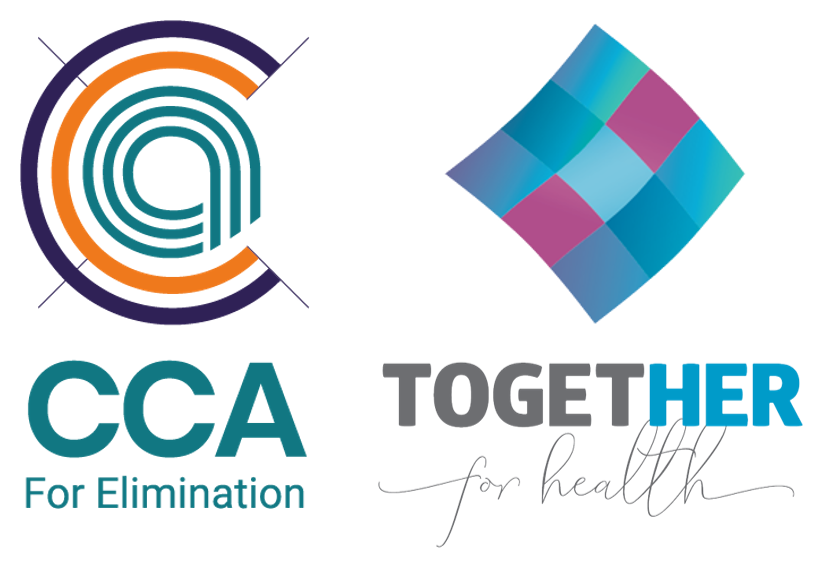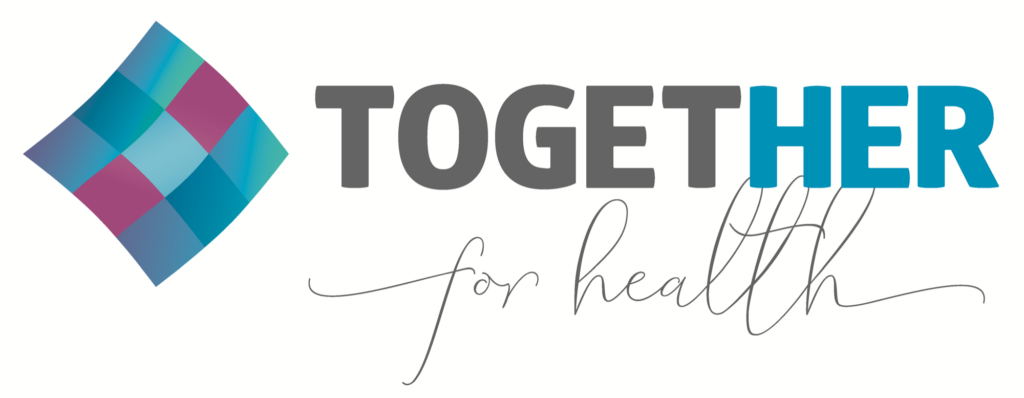Transforming Awareness into Action for Cervical Cancer Elimination

January 24, 2022
January is Cervical Cancer Awareness Month, a time to reflect on the impact cervical cancer has on women, families, and communities around the world.
Our organizations – Cervical Cancer Action for Elimination and TogetHER for Health – are committed to driving awareness of the lives affected by this preventable disease, and the opportunities to change those stories.
In 2020, the World Health Organization (WHO) outlined a plan to eliminate cervical cancer. This is an unprecedented opportunity: the first-ever chance to globally eliminate a cancer. To put all countries on the path towards elimination, the following targets have been set for 2030:
- Vaccinating 90% of girls against cervical cancer-causing strains of human papillomavirus (HPV) by 15 years of age, vaccines which have been proven to reduce incidence of cervical cancer by nearly 90%;
- Screening 70% of women at ages 35 and 45 for precancerous cervical lesions, an intervention that can result in an 80% reduction in cervical cancer mortality; and
- Treating 90% of those women identified with cervical disease, including 90% of women with pre-cancer and 90% of women with invasive cancer.
But 2020 also saw 600,000 women diagnosed with cervical cancer and more than 340,000 women losing their lives to the disease.
The COVID-19 pandemic has diverted resources and personnel away from many cervical cancer prevention programs, hindered vaccination and screening efforts around the world and caused women to delay seeking health services for social distancing reasons. But COVID-19 safety measures have also spurred some program teams to search for new ways to maintain services with both new and existing patients.
Resilience and adaptability by program implementers and cervical cancer advocates hasn’t been confined to one region or activity:
- The Nicaragua-based Lily Project developed a more focused screening “watch list” to safely prioritize screening services to those most in need, while also creating a sexual health education mobile app for young women.
- The Kizazi Chetu campaign has reached more than 60 million Kenyans with critical cervical health messaging through both traditional and social media. The campaign contributed to a significant increase in women seeking out information and services for cervical cancer.
- Researchers in India are investigating barriers and opportunities in state-wide HPV vaccine roll-out to understand how the vaccine can be delivered across the whole nation.
These are just a few examples from a global field of unwavering champions for women’s health. They, like us, know that each woman able to access these services, no matter where she lives, represents one more crucial step toward ending cervical cancer forever.
Such dedication is bolstered by evidence guiding more effective and efficient cervical cancer services. Newly updated cervical screening and treatment guidelines from the WHO encourage HPV testing and self-sampling for high-risk HPV. Further, a growing body of evidence suggests that a single dose of HPV vaccine may offer a similar level of protection as the current two-dose regimen, which in turn could significantly reduce costs and logistical difficulty associated with HPV vaccination programs.
What’s needed now is to match this momentum with the necessary resources and decisive implementation of what works to protect women’s cervical health.
Although resources for cervical cancer prevention in low- and lower middle-income countries remained consistent between 2019 and 2020, figures were far below what is necessary to fully fund the elimination agenda. In fact, the current funding pace projects to less than 10% of the estimated $10.5 billion necessary to fund WHO’s 90-70-90 targets in low- and lower middle-income countries by 2030. Every year of delay in meeting these critical funding targets puts hundreds of thousands of lives at risk.
It’s not just the money. Countries and funders must commit to and expedite implementation of new WHO screening and treatment guidelines to provide women everywhere with the most effective available options. Updated single-dose HPV vaccine schedules must be taken up by key implementers such as the Gavi Alliance as soon as the evidence warrants. And there remain many opportunities to better integrate cervical cancer prevention into existing healthcare pathways, including those for family planning, sexual and reproductive health, and HIV/AIDS.
The global effort to eliminate cervical cancer is built upon evidence-based tools and strategies. Advocates around the world have the motivation to match this knowledge, which has been demonstrated in their continued commitment to save women’s lives throughout the COVID-19 pandemic. Our organizations call on leaders everywhere to mirror such dedication, and make the bold political and financial decisions that can save generations of women from this preventable disease. The once-unbelievable opportunity to turn awareness into the permanent end of cervical cancer lies before us.
Alexander Wright is co-Chair of Cervical Cancer Action for Elimination (CCAE), a network of organizations working together to accelerate global progress towards a world free from cervical cancer.
Heather White is Executive Director of TogetHER for Health, a global partnership focused on ending cervical cancer by advancing political will, improving technology and practice, and building awareness.
“Woman picking tea” by BryonLippincott is licensed under CC BY-ND 2.0
